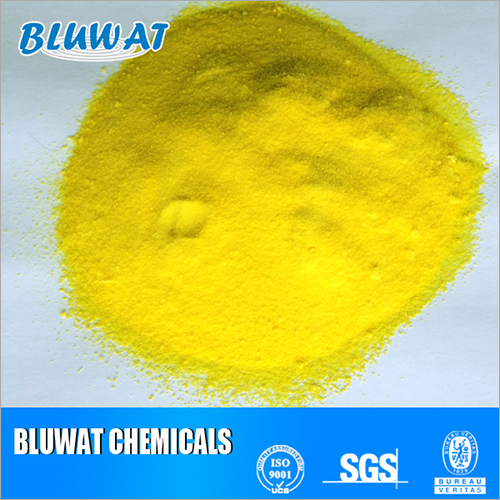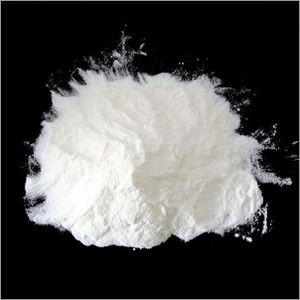Polyaluminium Chloride (PAC)
Product Details:
- Taste Odorless
- Purity 99%
- Density 0.95 Gram per cubic centimeter(g/cm3)
- Ingredients Polyaluminium Chloride
- Shape Granular / Powder
- Application Water treatment, wastewater treatment, industrial process water, paper making, cosmetics, deodorants
- Poisonous NO
- Click to View more
Polyaluminium Chloride (PAC) Price And Quantity
- 1 Metric Ton
- 400.00 - 500.00 USD ($)/Metric Ton
Polyaluminium Chloride (PAC) Product Specifications
- NO
- Used as a coagulant for water purification and industrial treatment processes
- Water treatment, wastewater treatment, industrial process water, paper making, cosmetics, deodorants
- Industrial grade
- Granular / Powder
- Odorless
- 99%
- 0.95 Gram per cubic centimeter(g/cm3)
- Polyaluminium Chloride
- Variable (depend on polymerization); approx. 174.45 g/mol for Al2Cl(OH)5
- Odorless
- 24 months
- 3.05.0 (1% solution)
- 28273200
- Easily soluble in water
- Yellow Powder
- ~100C (Decomposes)
- Excellent coagulation, flocculation efficiency, high purity, low iron content, rapid sedimentation, effective over a wide range of pH
- Consists of polymerized Al3+ ions bridged with hydroxide and chloride ions
- Chemical
- Powder
Polyaluminium Chloride (PAC) Trade Information
- 2500 Metric Ton Per Month
- 10 Days
Product Description
In order to fulfill the different demands of our customers, we are able to manufacture and export Polyaluminium Chloride (PAC). Our chemicals are formulated by our qualified professionals under the guidance of our high-ranking officials. They make use of modern equipments and quality compounds to come up with the quality Polyaluminium Chloride (PAC) Furthermore, our vast transportation facility has enabled us to deliver these chemicals within a given time-frame.
Other details:
- PAC, Polyaluminium Chloride
- PAC 30%min Al2O3
- PAC For drinking water treatment
- PAC White powder
- Flocculant
Special Key Features:
- Made from pure raw material.
- Used for drinking water treatment & paper mills as retention agent.
- Appearance: solid powder, white.
- Al2O3: 29% (min.).
- Basicity: 50.0% ~ 85.0%.
- Insolubles: 0.5% (max.).
- PH (1% water solution): 3.5 ~ 5.0.
- SO42-: 3.5% (max.).
- N: 0.09% (max.).
- As: 0.0005% max.
- Mn: 0.045% (max.)
- Cr6+: 0.0015% (max.)
- Hg: 0.00002% (max.)
- Pb: 0.003% (max.)
- Cd: 0.0006% (max.)
- Fe: 0.008% (max.)
Polyaluminium Chloride Advantages:Chloride Advantages:
- Its purifying effect on low-temperature, low turbidity and heavily organic polluted raw water is much better than other organic flocculants, also the treatment cost is lowered by 20-80%.
- It can lead to quick formation of folc (epecially at low temperature) with big size and rapid precipitation service life of cellular filter of sedimentation basin.
- The dosage is smaller than that of other flocculants, which is better for improving the quality of treated water.
- It has widerange adaptability to the waters at different temperatures (in the summer and the winter) and at different regions (in the south and the north of China).
- It is suitable for automatic dosing device of alum.
- It can adapt to a wide range of pH value (59), and can reduce the pH value and basicity after processing.
Polyaluminium Chloride Usage:
- The user can allocate remedy concentration by test and determine the optimum dosage according to different to be added after they are dissolved and diluted.
- The dilution ratio of liquid product is 5-50% and the dilution ratio of solid product is 2-20%.
- The liquid product dosage is 3-40kg/1000 tons water and solid product dosage is 1-15kg/1000 tons water.
- The amount of specific dosing is based on coagulation tests and experiments.
| Items | Data |
| Appearance | Solid powder, yellow or White |
| Al2O3 % | 29 min |
| Basicity % | 50.0~90.0 |
| Insolubles % | 1.5 max |
| pH(1% water solution) | 3.5~5.0 |
Polyaluminium Chloride Applications:
In addition to purification on drinking water,urban water supply and water for precision manufacture,it has a very wide range of applications especially in paper size,drilling exploration,drugs,sugar refining,cosmetics additives,daily chemicals industry etc.
Packaging & Shipping
Polyaluminium Chloride Packing:de Packing:
Superior Coagulation and Flocculation
Polyaluminium Chloride (PAC) is renowned for its outstanding coagulation and flocculation capabilities. These properties ensure efficient aggregation of suspended particles, promoting rapid sedimentation and enhancing the clarity of treated water. Its effectiveness across various pH levels makes it a reliable option in both water purification and industrial process applications.
Versatile Applications
PAC is widely used as a coagulant in water treatment, wastewater treatment, paper manufacturing, and select cosmetic and deodorant formulations. Its adaptability and high purity allow for optimal performance in different settings, offering solutions to a broad spectrum of industrial and municipal needs.
Safe and Easy to Use
With an odorless, non-poisonous profile and excellent water solubility, PAC is convenient and safe to handle. It remains stable under normal conditions, and dosing can be adjusted to achieve the best results according to specific water or process requirements. Its packaging in durable, lined bags supports secure and prolonged storage.
FAQs of Polyaluminium Chloride (PAC):
Q: How is Polyaluminium Chloride (PAC) used in water treatment processes?
A: PAC is employed as a coagulant in water and wastewater treatment to aggregate and remove suspended particles. By adding PAC to the water, impurities clump together (flocculate) and settle quickly, making the water clearer and safer for use.Q: What benefits does PAC offer compared to traditional coagulants?
A: PAC provides superior coagulation and flocculation efficiency, works across a wide pH range, features high purity, low iron content, and ensures rapid sedimentation. These advantages contribute to a more effective and cost-efficient treatment process.Q: When should PAC be dosed during treatment processes?
A: PAC should be added at the coagulation stage of water or wastewater treatment. The exact dosing depends on water quality and process requirements, but it is designed to allow for adjustable dosages for optimal results.Q: Where can PAC be applied besides water treatment?
A: Beyond water and wastewater treatment, PAC is also used in paper making, certain cosmetic and deodorant products, and for clarifying industrial process water. Its versatility extends to various industrial sectors.Q: What is the recommended method for storing and handling PAC?
A: PAC should be stored in its original 25 kg PP/PE woven bags with inner lining, kept in a cool, dry, and well-ventilated area. Handling is safe, as PAC is odorless and non-poisonous, but standard safety precautions should always be observed.Q: How soluble is PAC and what is its physical form?
A: PAC is easily soluble in water and is supplied in either a powder or granular form. This solubility ensures simple dosing and rapid mixing into treatment systems.
Price:
- 50
- 100
- 200
- 250
- 500
- 1000+
Other Products in 'Polyaluminium Chloride' category
 |
YIXING BLUWAT CHEMICALS CO., LTD.
All Rights Reserved.(Terms of Use) Developed and Managed by Infocom Network Private Limited. |









